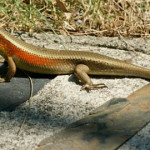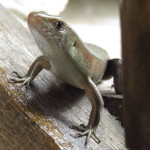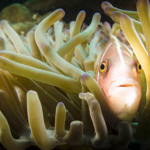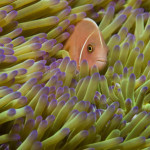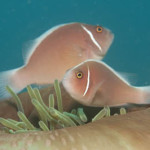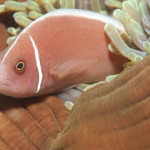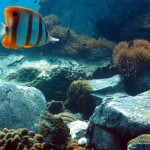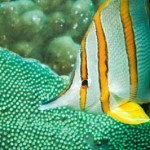Common Sun Skink (Eutropis multifasciata)
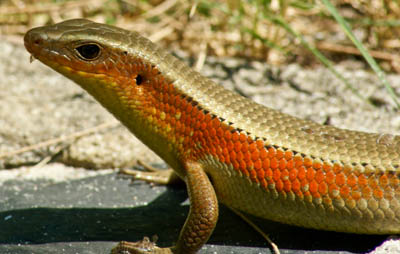
Image: David Vinot
Last Observed: November 2015
Observed By: Rinske Hackmann, David Vinot
This skink is characterised by its brightly coloured side markings. It has loads of names as well; Easrt Indian Brown Mabuya, Many-Loned Sun Skink, Many-Striped Skink and Golden Skink. It is found all over South, Southeast and East Asia
Common Sun Skink Wikipedia
Golden Tree Snake (Chrysopelea ornata)
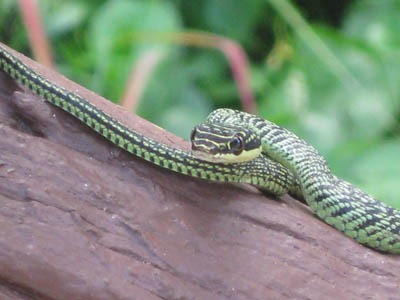
Image Copyright Lindsay Seggie
Observed: November 2018
Observed By: Lindsay Seggie, Tijl Adriaen, Laszlo Halsz, Perry Stevens, Robert Poser
The Golden Tree Snake isn’t golden. Who names these animals? Instead it has a characteristic black and green mottled colouration. In fact in certain other habitats it apparently has some orange markings as well – but not here on Koh Chang where it is one of the most commonly sighted snakes.
Oh, and it can fly! Well that’s not strictly true but it able to leap from trees and glide in a controlled fashion. That would be a thing to see. They flatten their bodies when gliding and form a U-shape on their underside which traps air and acts as a parachute.
The snake isn’t particularly large with a maximum lenth of 130 centimetres. And yes, it is poisonous, but only very mildly, and they are not considered a danger to humans.
Golden Tree Snake Wikipedia
Image Copyright Lyle Martinez
Image Copyright Tijl Adriaen
Image Copyright Tijl Adriaen
Image Copyrigh Perry Stevens
Image Copyright Perry Stevens
Image Copyright Tijl Adriaen
Image Copyright Laszlo Halasz
Image Copyright Laszlo Halasz
Image Copyright Laszlo Halasz
Image Copyright Laszlo Halasz
Flat-Tailed House Gecko(Hemidactylus platyurus)
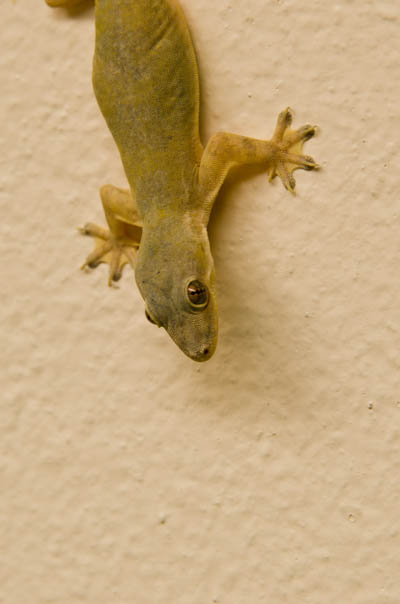
Last Observed: February 2015
Observed By: David Vinot
This small lizard is a member of the gecko family that is know in Thai as a Chingchok. It is the smaller cousin of the Tokay Gecko.
It is probably the most common and widespread lizard in Thailand and wherever you are if you look around the walls and ceiling of the building you are in you will probably see several. They are voracious insect hunters and are extremely useful for getting rid of mosquitoes and other biting insects.
Flat-Tailed House Gecko Wikipedia
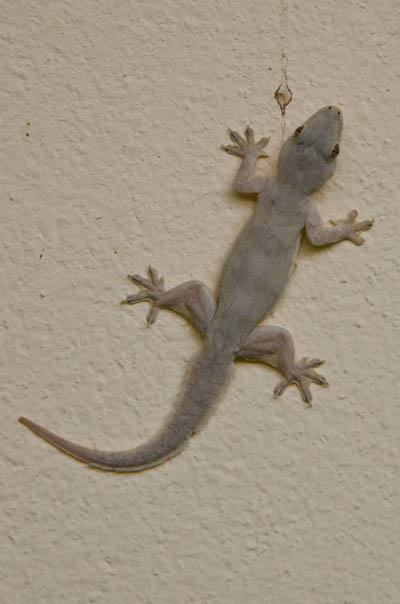
Mountain Horned Dragon (Canthosaura armata)
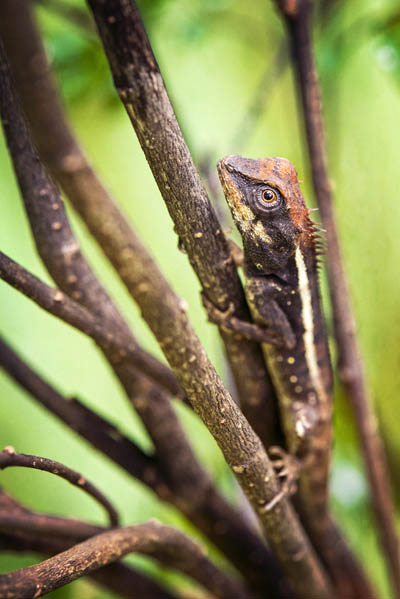
Image Copyright Jonathan Milnes
Last Observed: November 2015
Observed By: Jonathan Milnes
Mountain Horned Dragons, also known as Pricklenape Agamas are a species of lizard with a characteristic set of spikes at the neck.
They are well suited to Koh Chang, preferring a hilly and forested habitat. They live exclusively on insects and consume only live prey.
Acanthosaura Wikipedia
Bowring’s Supple Skink (Lygosoma bowringii)
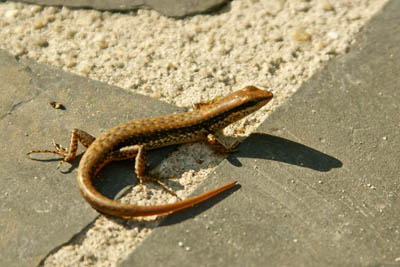
Image David Vinot
Last Observed: November 2015
Observed By: Tijl Adriaen, David Vinot
Also known as the Christmas Island Grass Skink, Bowring’s Supple Skink is a reptile found in East and Southeast Asia, Australian and the Philippines.
Bowring’s Supple Skink Wikipedia
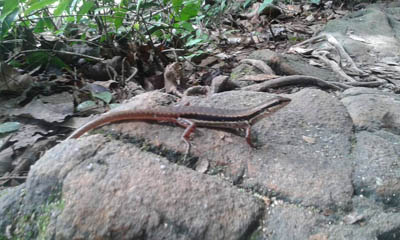
Image Copyright Tijl Adriaen
Longfin Batfish (Platax teira)
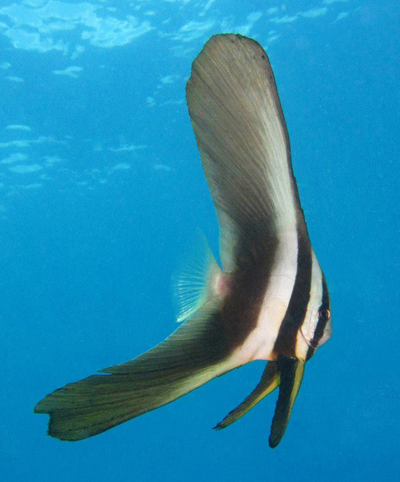
Image Copyright Hanah Weerkamp
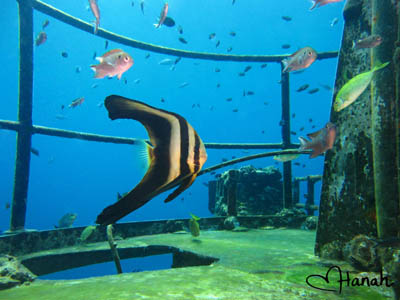
Image Copyright Hanah Weerkamp
Observed: Koh Chang Reefs,
Observed By: Jonathan Milnes
The Longfin batfish is one of the larger reef-dwelling fishes to be found in Koh Chang waters, growing up to 60cm in length.
Longfin Batfish Wikipedia
Clark’s Anemonefish (Amphiprion clarkii)
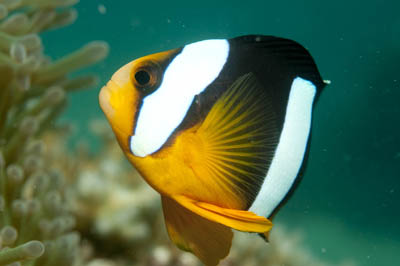
Observed: Koh Chang Reefs,
Observed By: Jonathan Milnes
Like all of the clownfish family Clark’s anemonefish has a symbiotic relationship with the poisonous sea anenomes that provide them shelter. they are impervious to the venom of their host and they protect the anemones from predation by other species and are in turn protected from attack by their host. A pretty fair deal.
Also they are sequential hermaphrodites with strict gender and size based hierarchies. This means that if one of them dies another will change gender and role to fill the gap. This is fascinating, read about it here. Imagine that system applied to humanity.
Clark’s Anemonefish has a bright orange, black and white coloration and is a common resident of the anemones of Koh Chang’s coral reefs.
Clark’s Anemonefish Wikipedia
Pink Skunk Clownfish (Amphiprion perideraion)
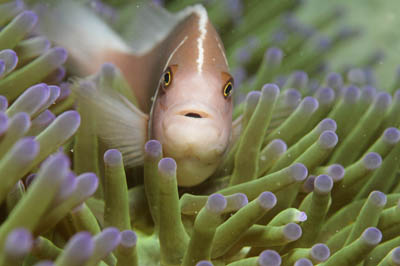
Image Copyright Jonathan Milnes
Observed: Koh Chang Reefs,
Observed By: Jonathan Milnes
Don’t think Nemo! Clownfishes are amazing beasts in all kinds of ways. First up is their symbiotic relationship with the poisonous sea anenomes that provide them shelter. they are impervious to the venom of their host and they protect the anemones from predation by other species and are in turn protected from attack by their host. A pretty fair deal.
Also they are sequential hermaphrodites with strict gender and size based hierarchies. This means that if one of them dies another will change gender and role to fill the gap. This is fascinating, read about it here. Imagine that system applied to humanity.
They are feisty little things, as divers will tell you, and not at all intimidated by size, but stay out of their territory and you’ll be left alone.
Pink Skunk Clownfish Wikipedia
Image Copyright Jonathan Milnes
Image Copyright Jonathan Milnes
Image Copyright Jonathan Milnes
Image Copyright Jonathan Milnes
Copperband Butterflyfish (Chelmon rostratus)
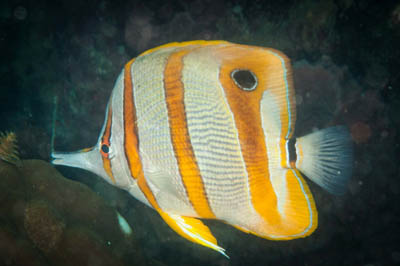
Image Copyright Jonathan Milnes
Observed: Koh Chang Reefs
Observed by: Jonathan Milnes
The Copperband butterflyfish is also known as the Beaked coral fish. It lives around coral and has quite a pronounced beak so that kind of makes sense. It also has one of those false eye patterns, common in nature, that protect the actual eye of the wearer by having a much larger fake eye effect in a less vulnerable part of the body. Evolution is a wonderful thing and this cunning trick has clearly helped the Copperband to survive.
Copperband Butterflyfish Wikipedia
Image Copyright Ian Gostelow
Image Copyright Jonathan Milnes
Blue Ring Angelfish (Pomacanthus annularis)
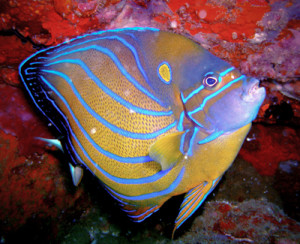
Image Copyright Jonathan Milnes
Observed: Koh Chang Reefs
Observed by: Jonathan Milnes
The beautiful blue ring angelfish is thankfully a fairly common sight on Koh Chang’s reefs. It is a voracious feeder eating algae, coral, other fish, shrimps and pretty much anything it can sink its teeth into.
Blue ring angelfish Wikipedia


